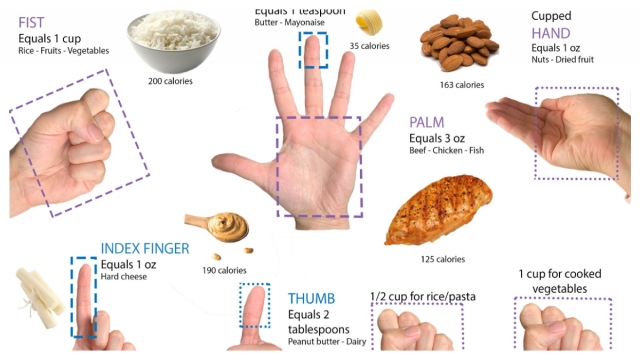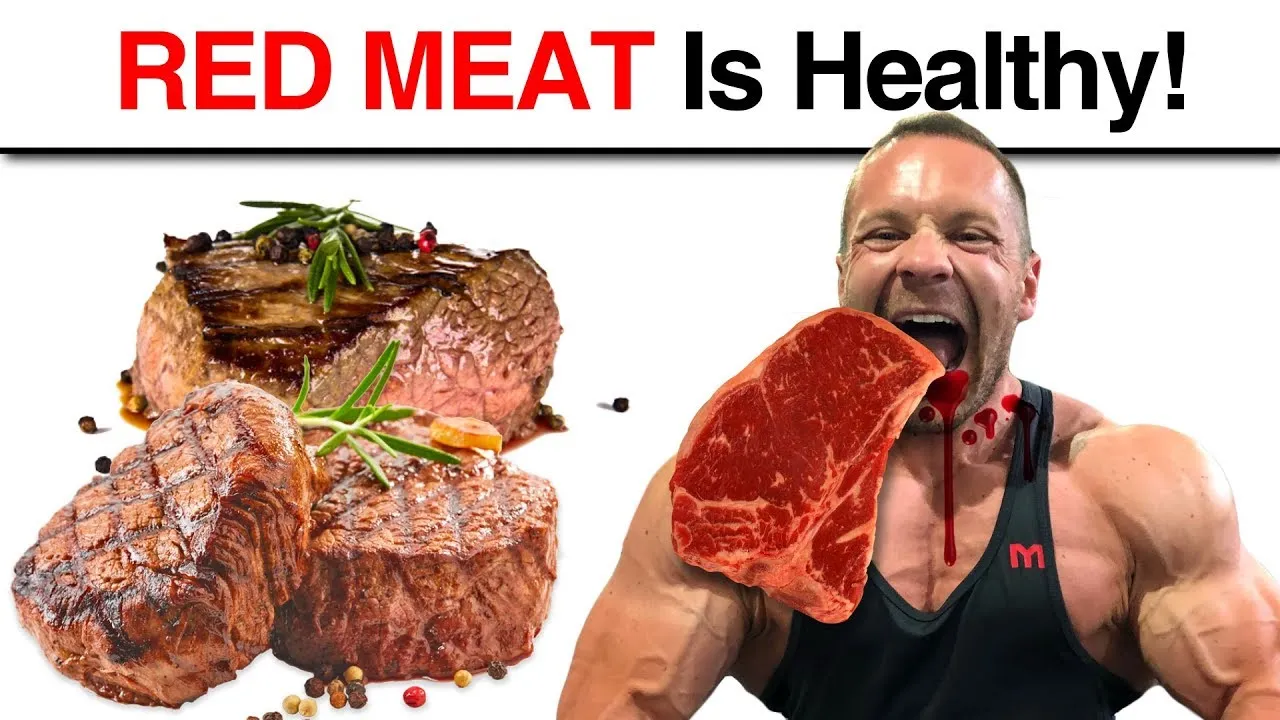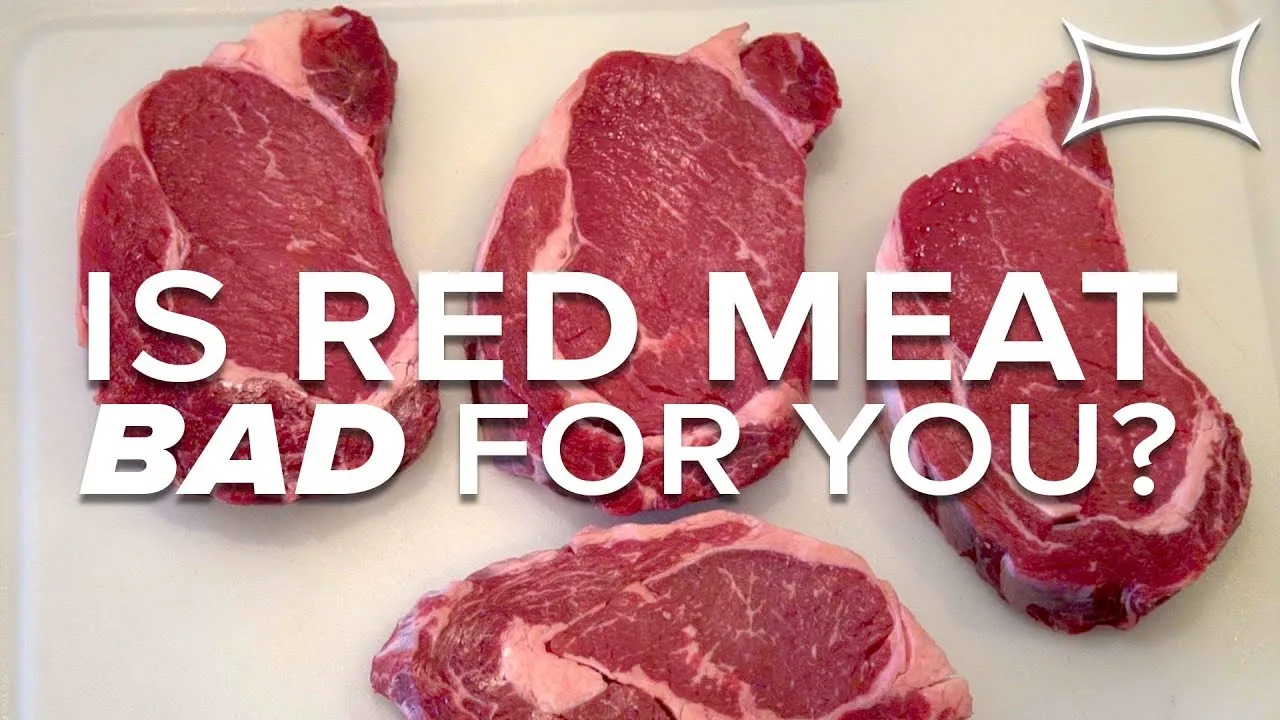1. What Are the Positive Health Effects of Eating Meat?
While the association of eating meat and diseases often sparks heated debates, it's important to understand both sides of the conversation. Contrary to popular belief, moderate meat consumption — especially lean red meat — can offer significant nutritional benefits when included in a balanced diet.
- Meat is a powerhouse of high-quality protein, essential for building and maintaining muscle mass, promoting satiety, and supporting weight management. Many people ask, "What are the benefits of eating meat daily?" The answer lies in its rich supply of vital nutrients like iron, zinc, and vitamin B12, which are harder to obtain in adequate amounts from plant-based diets. In fact, red meat provides nearly 91% of the recommended daily intake for B12 in just an 85g cooked serving — a nutrient essential for nerve function and preventing megaloblastic anemia.
- One major distinction between red and white meat is their heme iron content. Red meat contains up to ten times more heme iron than white meat like chicken, making it a superior choice for preventing iron-deficiency anemia. Heme iron is far more bioavailable than the non-heme iron found in plants, and it plays a crucial role in cognitive development, especially in children and adolescents. This raises a question many are now asking: Can you live a healthy life without eating meat? — technically, yes, but it requires meticulous planning and supplementation, particularly for nutrients like vitamin B12 and iron.
- Despite ongoing concerns about the health risks of eating meat, it’s essential to separate fact from fear. Many studies show that lean cuts of red meat can be part of a heart-healthy diet. While processed meats have been linked to an increased risk of chronic conditions like heart disease, the same cannot be said for fresh, unprocessed meat when consumed in moderation.
- People often wonder, “Is red meat really bad for you?” or “Does meat cause cancer?” The nuance lies in preparation methods, portion size, and frequency. The processed meat health risks — such as nitrites and preservatives used in sausages and deli meats — differ greatly from those of minimally processed or grass-fed cuts. Cooking methods also matter: grilling, baking, or boiling is far healthier than frying or charring meat.
- Moreover, meat plays a unique role in weight loss and body composition. High-protein, low-fat diets that include lean meat tend to increase satiety, promote thermogenesis, and preserve lean muscle mass. How much meat is healthy? While guidelines vary, many nutritionists recommend sticking to around 85–115 grams of cooked lean meat per meal, a balance that can help reduce the risk of obesity, type 2 diabetes, and cardiovascular disease.
- In the conversation about the meat consumption pros and cons, one must also consider individual dietary needs, ethical choices, and cultural preferences. Comparing a vegetarian vs meat diet, vegetarians often need to find alternative sources of iron, zinc, and B12 — nutrients that are naturally abundant in meat.
- So, is eating meat healthy or unhealthy? The answer isn’t black and white. The disadvantages of eating meat are usually tied to overconsumption, poor-quality cuts, and heavy processing. However, when enjoyed in moderation and sourced responsibly, meat offers substantial nutritional value and supports a well-rounded diet — especially when paired with plenty of fiber-rich vegetables and whole grains.
2. What Are the Negative Health Effects of Eating Meat?
While meat provides valuable nutrients like protein, iron, and vitamin B12, overconsumption — especially of red and processed meats — has been closely studied for its potential health consequences. The association of eating meat and diseases is increasingly highlighted in scientific research, with growing evidence linking meat-heavy diets to various chronic conditions. So, is meat bad for you? Let’s break it down.
1. Increased Cancer Risk
One of the most widely discussed concerns is the link between processed meat health risks and cancer. The World Health Organization (WHO) classifies processed meats — like bacon, sausages, and ham — as Group 1 carcinogens, meaning there is sufficient evidence they cause cancer, particularly colorectal cancer. Even high consumption of red meat, though not classified as a definite carcinogen, has been associated with increased cancer risk, raising the question: Does meat cause cancer?
Cooking methods matter too. Grilling, frying, or roasting meat at high temperatures can produce harmful compounds like heterocyclic amines (HCAs) and polycyclic aromatic hydrocarbons (PAHs) — both of which are linked to cancer.
2. Heart Disease and Cholesterol
Another major concern in the meat and heart disease discussion is the saturated fat content in fatty cuts of red meat. Diets high in saturated fat can raise LDL (bad) cholesterol levels, which increases the risk of coronary heart disease. While lean red meat can be part of a heart-healthy diet, excessive intake of fatty or processed meats contributes to cardiovascular disease.
3. Type 2 Diabetes
Many studies now show a strong association between frequent meat consumption and type 2 diabetes. This connection is particularly pronounced with processed meat, which often contains added sugars, preservatives, and sodium — all of which negatively impact insulin sensitivity. It’s no surprise that people frequently ask, “Is eating meat healthy or unhealthy?” The answer largely depends on the type, amount, and preparation of meat.
4. Gut Health and Digestive Issues
Unlike plant-based foods, meat contains no dietary fiber, which is essential for maintaining a healthy gut microbiome. Diets high in meat and low in fiber can slow digestion, increase inflammation, and even contribute to conditions like diverticular disease, gastroesophageal reflux (GERD), and gastritis. That’s why the vegetarian vs meat diet debate often focuses on the benefits of fiber-rich plant foods for digestive wellness.
5. Gallbladder and Liver Strain
Eating meat in large quantities may place extra burden on the liver and gallbladder. Some research suggests a link between excessive meat consumption and conditions like gallstones and non-alcoholic fatty liver disease, especially when combined with a sedentary lifestyle and high-fat diet.
6. High Salt and Preservative Intake
Processed meats are not only high in saturated fats but also loaded with sodium and chemical preservatives like nitrates and nitrites. High sodium intake is known to raise blood pressure, increasing the risk of stroke and heart disease.
So, How Much Meat Is Too Much?
This is one of the most common questions: How much meat is too much? Health authorities like the World Cancer Research Fund recommend limiting red meat to no more than 350–500 grams of cooked weight per week and minimizing or avoiding processed meat altogether. If you’re wondering, “Is red meat really bad for you?” the answer isn’t always clear-cut — but moderation, mindful choices, and proper cooking methods are key.
While meat undeniably has its nutritional value, the disadvantages of eating meat come into play when it’s eaten in excess, processed, or cooked at high temperatures. The association of eating meat and diseases is most strongly tied to processed and fatty red meats, which have been linked to cancer, heart disease, type 2 diabetes, and digestive disorders. Choosing lean meats, limiting frequency, and pairing them with high-fiber plant foods may help strike the right balance in your diet.
3. The Association of Eating Meat and Diseases: What Science Really Says
The ongoing debate around the association of eating meat and diseases has stirred both scientific curiosity and public concern. At the center of the controversy is red and processed meat, especially its link to colorectal cancer. According to the World Cancer Research Fund and the American Institute for Cancer Research, there is strong evidence that frequent consumption of red meat and processed meats like sausages and bacon can increase the risk of colorectal cancer. This has sparked heated discussions: is this a true causal link, or could it be influenced by other lifestyle factors?
So, is red meat healthy, or is it doing more harm than good? The answer isn’t black and white.
- While processed meat health risks are well-documented, lean red meat — when eaten in moderation — offers essential nutrients like iron, zinc, and high-quality protein. In fact, it plays a valuable role in supporting muscle growth, especially in older adults, due to its abundance of branched-chain amino acids. These nutrients are harder to obtain from a strictly vegetarian diet, sparking the ever-popular debate: vegetarian vs meat diet — which is better?
- When it comes to heart health, the relationship between meat and heart disease is nuanced. Saturated fat has traditionally been blamed, but newer studies show that red meat isn’t the sole or even the primary contributor to heart risk. The type of fat matters — for instance, over 50% of the fatty acids in beef are actually monounsaturated and polyunsaturated fats, which may have cardioprotective effects. Interestingly, when comparing white meat vs red meat, lean cuts of both appear to have a similar impact on cholesterol levels when part of a balanced, low-fat diet.
- But how much meat is healthy? Health authorities recommend no more than 70g of red or processed meat daily. Exceeding this amount — especially with grilled or heavily cooked meats — could expose individuals to harmful compounds like heterocyclic amines (HCAs) and polycyclic aromatic hydrocarbons (PAHs), which have been linked to DNA damage.
- Beyond cancer and cardiovascular disease, frequent meat consumption — especially in large amounts — has been associated with other health concerns, including type 2 diabetes, gastrointestinal issues, and even iron overload. This raises a broader question: what are the long-term effects of a high-meat diet?
- On the flip side, meat protein benefits can’t be overlooked. High-protein diets, especially those incorporating lean meat, have been shown to support weight loss, enhance satiety, and regulate hunger hormones like ghrelin and peptide-YY. A protein-rich breakfast — featuring eggs, chicken, or lean beef — can reduce overall caloric intake for the day.
- The association of eating meat and diseases often centers on chronic illness — but there’s another side to the story: vitality, strength, and aging. For older adults, especially those facing sarcopenia (age-related muscle loss) or sarcopenic obesity (where lost muscle is replaced by fat), the role of red meat in supporting healthy muscle mass becomes critically important. High-quality animal protein, particularly from lean red meat, is rich in bioavailable iron and branched-chain amino acids like leucine, isoleucine, and valine — key players in muscle repair and growth.
- So, is eating meat healthy or unhealthy? The answer lies in context. While some headlines paint meat as harmful, studies show that lean red meat can support muscle strength, energy levels, and even stamina in aging adults. Compared to plant-based proteins, animal proteins have a higher concentration of these essential amino acids, giving red meat a unique edge when it comes to protein synthesis. In fact, research shows that soy protein doesn’t stimulate muscle growth in the same way animal-based proteins do — particularly in elderly populations.
- And it’s not just theory. When elderly women engaged in resistance training and included lean red meat in their diets, they experienced more gains in lean body mass and muscle strength than those following similar exercise routines without meat. This supports the idea that meat protein benefits go far beyond satiety — they’re crucial for maintaining physical function later in life.
- But let’s zoom out. The disadvantages of eating meat come into sharper focus when we consider broader population studies. A massive analysis from the UK Biobank, which followed nearly half a million adults, explored not only red and processed meat health risks, but also the effects of poultry consumption on common diseases.
- The results? Individuals who ate meat frequently — three or more times per week — had higher risks for heart disease, type 2 diabetes, diverticular disease, pneumonia, and colon polyps. Even white meat wasn’t entirely off the hook. Regular poultry eaters faced elevated risks for GERD (acid reflux), gallbladder issues, and gastritis — although, interestingly, both red meat and poultry were linked to lower rates of iron-deficiency anemia. This underscores the importance of iron in meat-heavy diets — but also invites the question: Can you live a healthy life without eating meat?
- Quantitatively, the study revealed that just 70g more of unprocessed or processed red meat per day raised heart disease risk by 15% and diabetes risk by 30%. Likewise, poultry consumption increased reflux risk by 17% and diabetes by 14%. A notable link was observed between high meat consumption and obesity, which may partially explain the increased disease risk. So if you’re wondering, how much meat is too much? — the answer might be anything beyond 70g a day, at least according to Public Health England.
- What about the biological basis of meat and disease development? There are a few working theories. When meat is cooked at high temperatures (think grilling, searing, or barbecuing), it can form potentially harmful compounds like heterocyclic aromatic amines (HAAs) and polycyclic aromatic hydrocarbons (PAHs), both of which may cause DNA damage. Red meat also contains nitrates, which may convert into N-nitroso compounds (NOCs) in the body — chemicals suspected to contribute to cancer development. Rodent studies even show increased markers of oxidative stress from red meat consumption, hinting at deeper physiological impacts.
- But before you toss your steak knives for good, it’s important to note: moderation and meat quality make a huge difference. Opting for lean cuts of red meat and limiting heavily processed options — such as sausages, burgers, and pâté — is a smarter, safer choice. According to the UK’s National Health Service (NHS), choosing lean meats and trimming visible fat can significantly reduce health risks.
- So, is meat bad for you? Not inherently. Meat can be part of a healthy lifestyle — but like anything else, it’s the dose that makes the poison. While red meat offers valuable nutrients like vitamin B12, heme iron, and complete protein, overdoing it — especially with processed meats — may tip the balance from health to harm.
- And if you’re considering cutting back or cutting it out? What happens if you stop eating meat? Many people report improved digestion, reduced inflammation, and lower cholesterol — but they may need to find alternative sources of iron, B12, and protein. Foods like fish, eggs, lentils, quinoa, and nuts can fill the nutritional gap without raising red flags for chronic disease.
- The association of eating meat and diseases is real — but so are the benefits of eating meat daily when it’s done thoughtfully. It’s not about quitting meat altogether. It’s about making conscious, informed choices that support both your short-term strength and long-term well-being.
4. How to Eat Meat the Smart Way: Maximise the Benefits, Minimise the Health Risks
If you choose to eat meat — and many of us do — the goal shouldn’t be to eliminate it entirely but to eat meat more consciously. Understanding the association of eating meat and diseases doesn’t mean cutting out meat cold turkey. It means evolving how we source, cook, and combine it in our diets. So how can we reap the benefits of eating meat daily while reducing the potential downsides?
1. Prioritise Unprocessed Over Processed Meat
Not all meat is created equal. One of the clearest findings from recent research is that processed meat health risks — such as those from bacon, hot dogs, and deli slices — are significantly higher than those from unprocessed red meat. Processed meats have been directly linked to a higher risk of colorectal cancer, heart disease, and type 2 diabetes. If you’re asking, “What’s the difference between processed and unprocessed meat?”, it comes down to additives, preservatives, and heavy processing that alter the meat’s natural state. Choose fresh, minimally handled cuts to avoid these added risks.
2. Don’t Overlook Organ Meats
Liver, kidneys, heart — they might not be everyone’s go-to, but organ meats are nutritional powerhouses. Packed with iron, vitamin A, B12, and essential amino acids, they’re some of the most nutrient-dense foods you can eat. For those wondering what are the benefits of eating meat, this is a major one. A small amount of organ meat can boost your energy levels, support brain health, and help prevent iron-deficiency anemia.
3. Rethink the Way You Cook Meat
Here’s a hidden danger: the way you cook meat could be increasing your exposure to harmful compounds. High-temperature methods like grilling, barbecuing, and pan-frying can produce carcinogens such as heterocyclic amines (HAAs) and polycyclic aromatic hydrocarbons (PAHs) — both implicated in cancer development. Overcooked, charred meat may raise your risk. So, to minimise the disadvantages of eating meat, aim to use gentler cooking methods like baking, steaming, or slow-roasting. And if you do grill, wipe off drippings and avoid blackening the meat.
4. Balance with Whole, Plant-Based Foods
Even the most committed carnivore can benefit from more plant-based foods. Diets rich in vegetables, legumes, nuts, seeds, and whole grains are consistently associated with lower rates of chronic disease, from heart disease to diabetes to cancer. A vegetarian vs meat diet doesn’t need to be all-or-nothing — it can be a blend. For instance, adding more fiber-rich foods can help reduce the impact of saturated fats found in meat and support better digestion and blood sugar regulation.
5. Choose Organic and Grass-Fed When Possible
If you’re wondering is red meat healthy, context matters. Organic meat from local farms typically comes from animals raised without hormones or antibiotics and under better welfare conditions — and it often contains fewer contaminants. Grass-fed beef is another smarter choice. It’s not only more sustainable, but it’s also richer in omega-3 fatty acids and antioxidants compared to grain-fed counterparts. If you're asking, “Is meat bad for you?”, this is part of the nuanced answer: the type of meat — and how it was raised — matters greatly.
6. Keep Your Portions in Check
So, how much meat is healthy? Most guidelines recommend no more than 70g of red or processed meat per day — about the size of a deck of cards. Overconsumption has been tied to meat and heart disease, cancer, and weight gain. Portion control, paired with quality, is one of the easiest ways to reduce the health risks of eating meat without giving it up entirely.
SUMMARY
This in-depth guide explores the complex association of eating meat and diseases, unpacking everything from the health risks of eating meat to its nutritional value. We examine whether red meat is healthy, compare white meat vs red meat, and look at the pros and cons of meat consumption through the lens of heart health, cancer risk, and longevity. Supported by research from large cohort studies and clinical trials, this article also addresses common questions like “Does meat cause cancer?”, “Is white meat healthier than red meat?”, and “How much meat is too much?” Finally, we offer practical tips on how to maximise the benefits of meat while minimising its downsides, including choosing lean cuts, opting for grass-fed beef, and combining meat with plant-based foods. Whether you're a meat lover or flexitarian, this article gives you the tools to eat smarter and live longer.
Maybe you are interested:

Types of Meat and How Much to Eat: A Complete Guide to Healthy Meat Consumption








